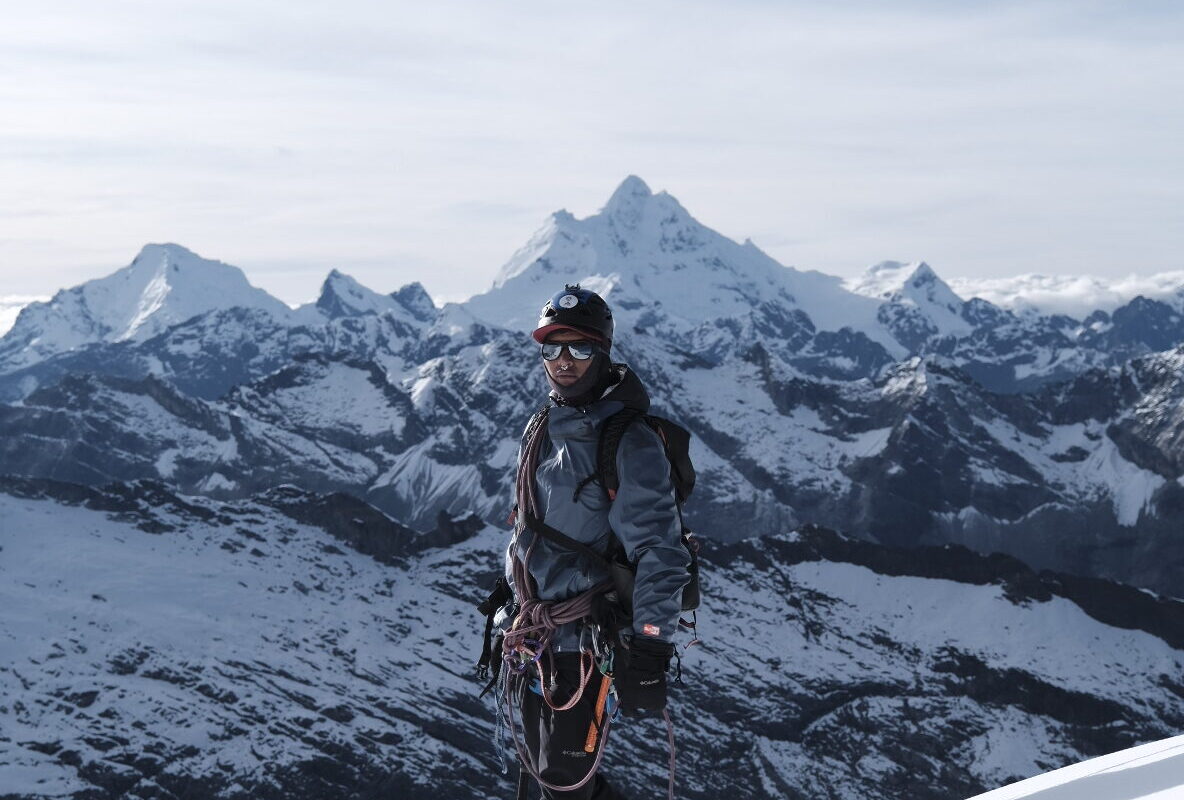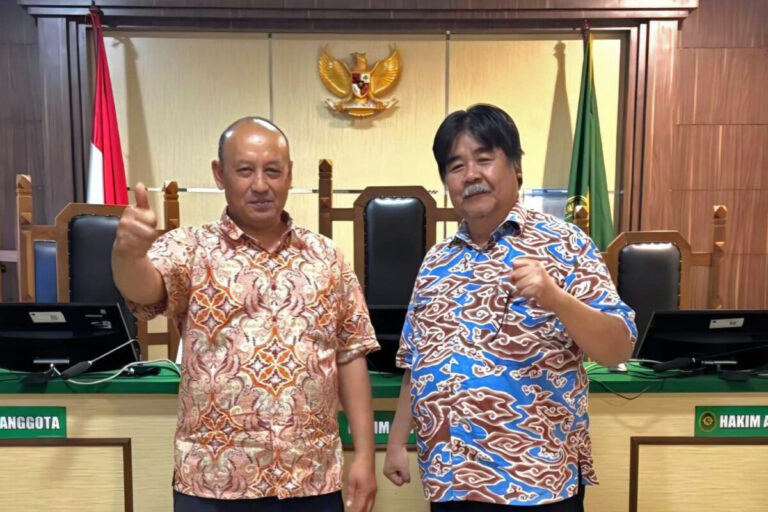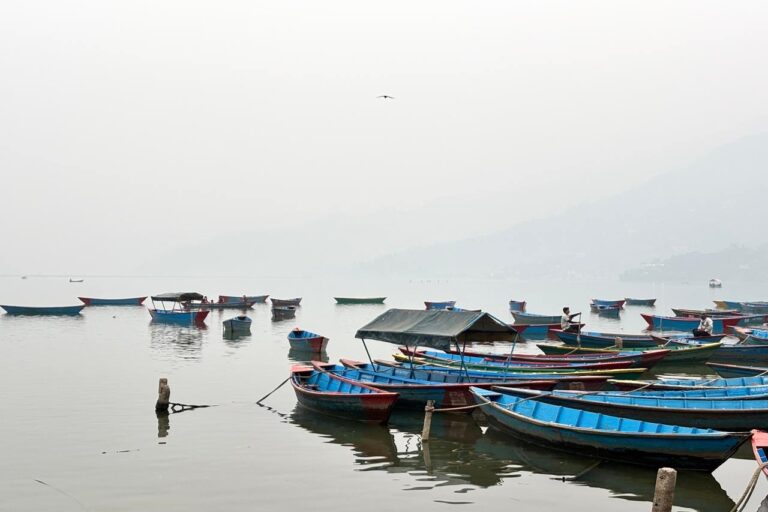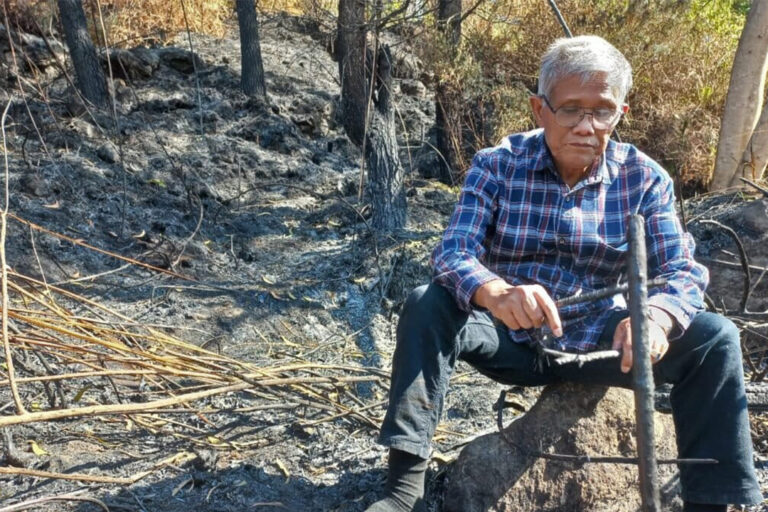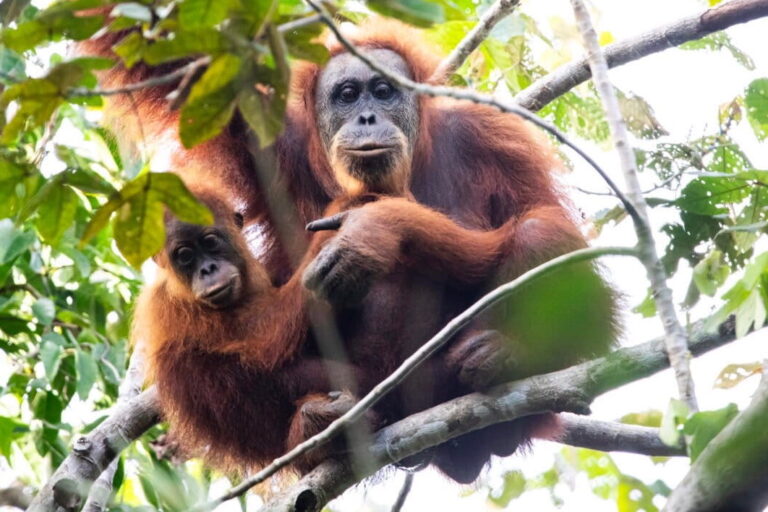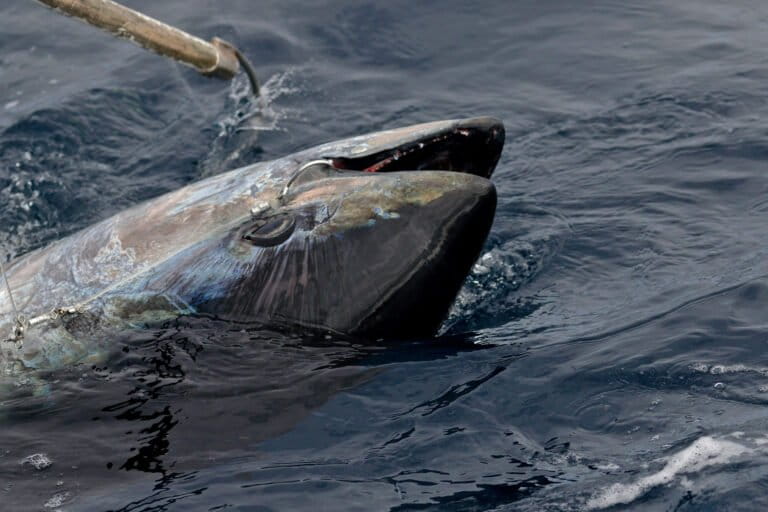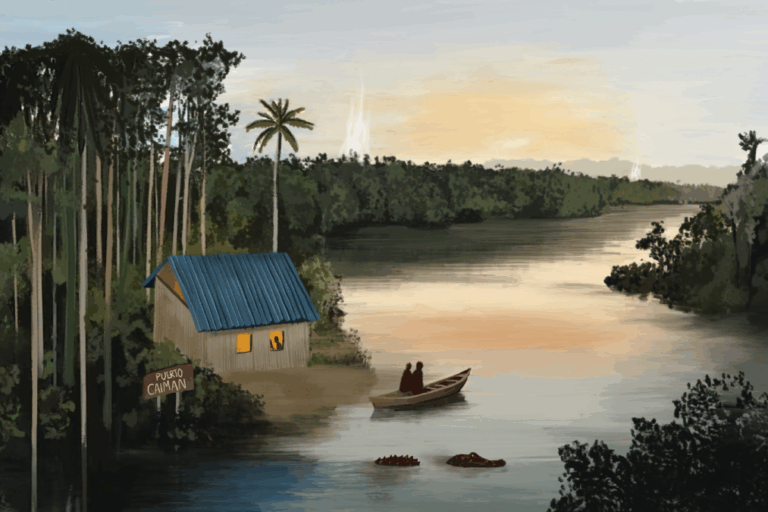- As an organization that has extensive field operations in about 60 countries and runs a network of zoos and an aquarium in New York City, the Wildlife Conservation Society (WCS) is unique among big conservation groups.
- Like most conservation organizations, WCS has faced great challenges over the past two years, but it is emerging from the pandemic with a new 2030 strategy that builds on its strengths and responds to trends in conservation and beyond.
- Cristián Samper, a Colombian biologist who has served as President and CEO of WCS since 2012, told Mongabay that WCS’s new strategy focuses on how it is uniquely positioned to address “three interconnected crises” we presently face: the loss of biodiversity, climate change, and pandemics.
- “The pandemic, which has impacted the lives of all people and all nations, has reminded us that we are all part of nature,” Samper said. “We are at an inflection point; a moment that demands new solutions to how we live and interact with nature.”
Between the global pandemic, the accelerating impacts of climate change and environmental degradation, and the conservation sector’s reckoning with its colonial past, 2020 and 2021 have been a tumultuous time for efforts to conserve the planet.
As an organization that has extensive field operations in about 60 countries and runs a network of zoos and an aquarium in New York City, the Wildlife Conservation Society (WCS) has not been spared these challenges: It has had to navigate the loss of staff and their loved ones to COVID-19, the complex dynamics of having a presence in so many different places at a time of great uncertainty and hardship, and public outcry over what are now widely viewed as “antiquated and racist” practices dating back to its founding as the New York Zoological Society in the 1890s.
WCS is emerging from the second year of the pandemic with a new strategy that doubles down on the organization’s strengths and responds to emerging trends that expand the relevance of conservation for everyone. Cristián Samper, the President and CEO of WCS, told Mongabay that WCS is focusing on how it is uniquely positioned to address “three interconnected crises” we presently face: the loss of biodiversity, climate change, and pandemics.
“The year 2020 will be remembered as one of the most challenging for our generation,” Samper said. “The pandemic, which has impacted the lives of all people and all nations, has reminded us that we are all part of nature. We are at an inflection point; a moment that demands new solutions to how we live and interact with nature.
“Our new strategy is based on the interconnectedness of these crises and most importantly, their solutions. The next decade will be crucial if we want to build a carbon neutral and nature positive future for us and all life on Earth.”
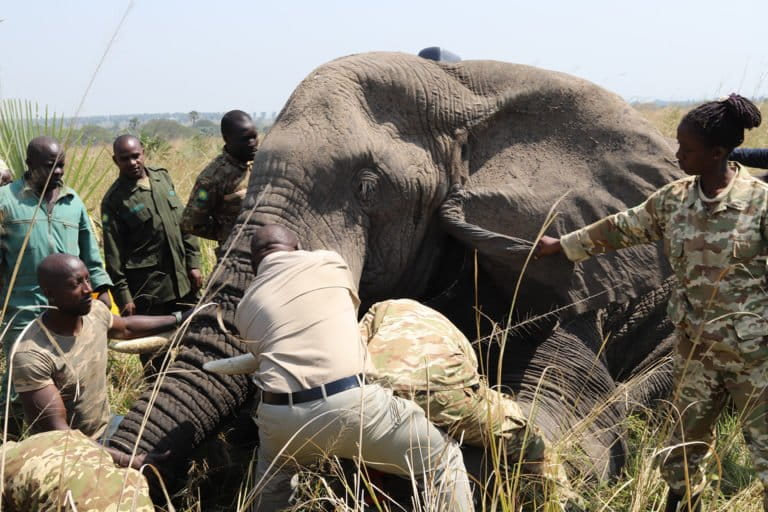
According to Samper, that “carbon neutral and nature positive future” involves working with Indigenous and local communities to protect and steward ecosystems that store carbon and house wildlife, restoring damaged and degraded habitats through rewilding initiatives, promoting the “One Health” approach that links human health to a planetary health, using science to inform policy, and inspiring the public to care about nature and animals. Forests are a particular priority for WCS.
“Our new strategy emphasizes forests and natural ecosystems because they play critical roles in climate mitigation, adaptation and biodiversity conservation,” Samper said. “Preventing deforestation can also help us avoid future zoonotic pandemics. Forests are home to two-thirds of land-based plants and animals, and they support the livelihoods for 1.6 billion people. They absorb nearly a third of every ton of carbon emitted and provide services like water and erosion control.”
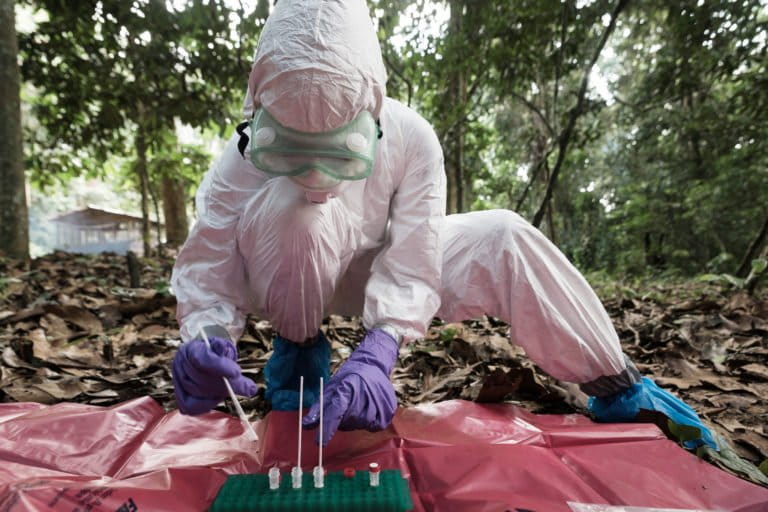
Samper said that the scale of the challenges we face means that success will hinge on collaboration between a wide array of stakeholders that haven’t always worked together.
“The conservation sector needs more collaboration and to realize that no single organization can save the planet for future generations,” he said. “The conservation community cannot work in its own silo. We need to work more with other sectors like agriculture, energy, finance, health, and the private sector. If we can learn to collaborate better, we will see exponentially bigger impact.”
While this sort of transition may seem like a tall order for a field that has at times been criticized for its traditional top-down approach, Samper noted that the conservation sector has evolved substantially since he got his start three decades ago, becoming more inclusive and cross-disciplinary.
“We have moved from focusing on single species to places and ecosystems, now we tackle systemic drivers like agriculture and climate, and we work with people from multiple disciplines and backgrounds,” he said. I see much more awareness about the threats to biodiversity and the impacts of climate change on nature and people, especially among younger people.
“I also see more diversity in the field, with more women and people from different backgrounds working in conservation, making us stronger and more effective. But we still need to build stronger institutions in the countries where biodiversity is found.”
Samper spoke about these topics and many more during a recent conversation with Mongabay founder Rhett A. Butler.

AN INTERVIEW WITH CRISTIÁN SAMPER
What inspired your interest in wildlife conservation?
I grew up in Bogota, Colombia, and spent my childhood exploring nature in the tropical Andes. I was fascinated by the diversity of birds and plants and that inspired me to study biology. I helped create the first private reserve in Colombia and did the field work for my PhD studying the ecology of cloud forests and getting to know the Awá Indigenous Communities. I realized that many of the areas I studied were disappearing and that it is not enough to know a place; you need to use your knowledge to help protect it and to work with local communities.
How did your career path unfold?
I finished my PhD at Harvard in 1992 and returned to Colombia at the time of the Earth Summit in Rio de Janeiro. It was a very exciting time with world leaders coming together to sign global agreements on biodiversity (the Convention on Biological Diversity) and climate.
I was invited to help design the national environment system in Colombia, including the creation of a new Ministry of the Environment and I advocated for the role of science to inform policy. I was the founding director of the national biodiversity institute, named after Alexander von Humboldt. And I served as the chief science advisor, represented Colombia in the United Nations negotiations and helped launch the Millennium Ecosystem Assessment. (As I write this, I am in Glasgow to push for the connection between nature and climate at COP26.)

I then joined the Smithsonian Institution, starting at the Smithsonian Tropical Research Institute in Panama, one of the leading research facilities for tropical biology. After that I became director of the National Museum of Natural History in Washington, and then acting Secretary of the Smithsonian. It was my first experience with education, and I learned how museums can help touch and influence people’s hearts and minds. I was also in charge of the largest museum collection in the world and realized that many of the species in the collection were threatened and felt we had to do something to save them. I wanted to use the collections to understand changes taking place, and just as importantly, to help do something to prevent the extinction of species.
During my time at the Smithsonian, I served on the boards of The Nature Conservancy and the World Wildlife Fund, and I had a chance to visit field projects around the world. I decided my next job would be in the conservation field, so I couldn’t resist the invitation to join the Wildlife Conservation Society (WCS) in 2012. WCS brings together all my interests in science, education, conservation and policy.
You’ve been working in biology for 30 years now, what are the biggest differences in the field between when you got your start and now?
There are many differences and the changes have only made biology and wildlife conservation efforts and programs better and more relevant than ever. We have moved from focusing on single species to places and ecosystems, now we tackle systemic drivers like agriculture and climate, and we work with people from multiple disciplines and backgrounds. I see much more awareness about the threats to biodiversity and the impacts of climate change on nature and people, especially among younger people.

I also see more diversity in the field, with more women and people from different backgrounds working in conservation, making us stronger and more effective. But we still need to build stronger institutions in the countries where biodiversity is found.
A combination of high-profile controversies in conservation in recent years and the global outcry following George Floyd’s killing last year has put a spotlight on discrimination, colonial legacy, inequity, and lack of inclusivity in the sector. Are you seeing any effect of this greater awareness in the conservation sector generally? And how is WCS responding?
Last year marked a pivotal year for advancing diversity, equity, inclusion (DEI) and social justice in the United States. It’s important for that momentum to continue. At WCS, we had been reflecting for several years on the importance of addressing the antiquated and racist views and actions by some in our organization in the early 1900s. Like many organizations, academic institutions, or businesses founded over 100 years ago, the views of those who led these entities then are not shared today. In fact, at WCS we denounced such views and have offered an apology.
In addition to working in the United States, we work across the globe and bring these same DEI core values to all our efforts. Indigenous Peoples and local communities are our best partners for conserving natural resources in the wild landscapes and seascapes where we work, and they depend on wild places for their well-being. The importance of building effective partnerships with Indigenous Peoples and Local Communities (IPLCs) is highlighted in a 2021 report, to which WCS contributed as a partner. The report demonstrates how global biodiversity goals are unattainable without the full recognition of IPLC land and resource rights and makes recommendations for actions by policy makers, donors and conservation organizations.

A more diverse and inclusive conservation movement in the US and around the world needs to be a goal for all conservation groups. Diversity, equity and inclusion efforts make us stronger and have been a large part of our culture and core values at WCS for many years as a global institution.
What do you see as the biggest gaps in the conservation sector? What is holding conservation back from having greater impact?
The conservation sector needs more collaboration and to realize that no single organization can save the planet for future generations. It takes all of us to tackle this global challenge. Donors want to see their investments maximized through collaboration and great impact.
In addition, the conservation community cannot work in its own silo. We need to work more with other sectors like agriculture, energy, finance, health, and the private sector. If we can learn to collaborate better, we will see exponentially bigger impact. While we all need to be proud of the organizations where we work, we also need to be proud of the partnerships we can build.

On funding the conservation sector, we need to think about more innovative finance vehicles like carbon credits and blended finance, where private and public dollars are used to leverage each other.
You have just launched a new strategy at WCS – WCS 2030. This is your second long-term strategy since you began as the WCS CEO and President in 2012. What are the key elements in WCS 2030?
Our new WCS 2030 Strategy: Saving Wildlife and Wild Places in a Rapidly Changing World describes our mission, vision, values, theory of change, goals and priorities going forward. Our 2030 strategy focuses on the three interconnected crises facing our world—the loss of biodiversity, climate change, and pandemics—and highlights how WCS is uniquely positioned to address them with the science, education and the conservation work we do in our zoos (Bronx Zoo, Central Park Zoo, Queens Zoo, Prospect Park Zoo) and New York Aquarium, and in the nearly 60 countries we work in around the world.
Our new strategy reflects the evolution of the world around us, and of our own thinking. The priorities include:
Why this new strategy now?
The year 2020 will be remembered as one of the most challenging for our generation. The pandemic, which has impacted the lives of all people and all nations, has reminded us that we are all part of nature. We are at an inflection point; a moment that demands new solutions to how we live and interact with nature.
With WCS 2030, we explain how our work is crucial to solving the climate, biodiversity and health crises without losing sight of our core mission to save wildlife and wild places. Our new strategy is based on the interconnectedness of these crises and most importantly, their solutions. The next decade will be crucial if we want to build a carbon neutral and nature positive future for us and all life on Earth.
In the WCS strategy there is emphasis on forests as key to advancing the battles against the climate crises, biodiversity crises and preventing future pandemics. Can you explain that?
Our new strategy emphasizes forests and natural ecosystems because they play critical roles in climate mitigation, adaptation and biodiversity conservation. Preventing deforestation can also help us avoid future zoonotic pandemics.
Forests are home to two-thirds of land-based plants and animals, and they support the livelihoods for 1.6 billion people. They absorb nearly a third of every ton of carbon emitted and provide services like water and erosion control. However, less than a quarter of the world’s remaining forests are intact, and they are being lost, along with their climate and biodiversity benefits, at twice the rate of forests overall, mostly due to infrastructure and agricultural expansion.
We need to protect what we have, restore what we lost, and transform our food systems.

Indigenous Peoples live in at least 35% of the world’s remaining intact forests and their cultural values are often strongly aligned with their active protection of these forests. So protecting intact forests is critical to WCS strategy for addressing the linked crises of climate change, biodiversity loss, and public health while safeguarding the rights and the cultural self-determination of Indigenous Peoples.
How has the pandemic affected WCS’s work? Do you think the pandemic will teach us anything about how to do conservation better?
The pandemic has affected every aspect of our lives and has had a very large impact on our work in New York and around the world.
We had to close our zoos and aquarium to the public for five months, while still looking after the animals and the facilities in our care every day. Since students and families could not come to our parks we immediately pivoted to expand our digital outreach work, which allowed us to include more content from our field work around the world, and we were able to reach a much larger audience. As we reopened our parks, we redesigned the visitor services to provide a safe experience, including the use of timed tickets. All this led to an increase in visitor satisfaction.
Concerning our field conservation, our operations were affected and continue to be in many places around the world where vaccinations rates are low and we have lost staff to COVID. Some of our field activities and plans were delayed, but it has also brought out the best in our people and partners.

I am inspired by the resilience and commitment of our teams in New York and across the globe. One of the most important insights is the fact that we can’t address the climate, biodiversity and pandemic crises as separate issues. They all share the same primary threat – humanity’s destruction of nature – and many of the tactics to address these crises are similar too. For example, protecting intact forests will sequester carbon to combat climate change—but it will also protect habitat for the fauna and flora facing extinction, and it will keep nature intact helping to reduce a spillover of viruses from nature to humans.
Can you explain One Health and how is WCS moving that concept forward to prevent future pandemics?
Human, wildlife and environmental health are intrinsically interconnected and profoundly influenced by human activities. For decades, WCS has had the largest international team dedicated to wildlife disease surveillance, rapid response, local training, and wildlife health. We have broken down traditional barriers separating the study of animal and human health, and we led pioneering research to find winning solutions that improve the well-being of wildlife, livestock, plants, humans, and the environment.
The One Health concept widely embraced today by governments, academia and animal and human health communities was developed back in in September 2004, when health experts from around the world met for a symposium in Manhattan organized by WCS and hosted by The Rockefeller University. The symposium focused on the current and potential movements of diseases among human, domestic animal, and wildlife populations. The result of the symposium was The Manhattan Principle and the One Health concept we use today, which lists 12 recommendations for establishing a more holistic approach to preventing epidemic and epizootic disease. These principles were then updated in 2019 at a meeting in Berlin organized by the German Government and WCS right before the known emergence of Sars-CoV-2.
COVID-19, Ebola Hemorrhagic Fever, West Nile Virus, Zika Virus, MERS, SARS, Monkeypox and Avian Influenza all remind us that human and animal health are intimately connected. A broader understanding of health and disease requires a unified approach, achievable only through a confluence of human, domestic animal and wildlife health. Only by breaking down barriers among agencies, individuals, specialties and sectors can we liberate the innovation and expertise needed to reduce the risk of future zoonotic pandemics.
How does WCS evaluate impact? And through that lens, what are WCS’s biggest successes in its long history, as well as successes during your tenure, which is now approaching 10 years?
Our mission is to save wildlife and wild places, so one of the key measures is the change in the abundance and distribution of species in the countries where we work. Initially, this might be about reducing the rate of decline or stabilizing populations, but ultimately it is about increasing them and rewilding the places where they used to live so they can once again thrive there. Ultimately, many will judge us on how effective we have been with preventing species from going extinct.
One of our earliest and most important conservation successes was our role in helping Indigenous Communities and other organizations to save the American bison from going extinct, which was championed by the Bronx Zoo in the early 1900s, and is an initiative that still continues today.

Across our long-term field sites, tiger and jaguar populations are slowly recovering. African forest elephant populations have stabilized or grown where WCS has worked over many years with our partners to ensure sustained management and protections. Our sustained conservation efforts have resulted also in stable great ape populations at nearly all of our field sites in Africa. At all 10 sites where WCS is working to conserve chimpanzee populations, they are holding steady.
In Asia, ape numbers are more challenging to measure, but our field data indicate that where we work, the populations of Sumatran orangutans in Indonesia and Bornean orangutans in Malaysia are constant. The Burmese star tortoise has been brought back from the brink of extinction by highly successful captive breeding and reintroduction efforts in Myanmar.

Those are just a few examples of our impact historically and more recently. The reason why we can assess this impact is by being on the cutting edge of techniques to assess wildlife populations, where WCS has been on the forefront for decades.
We also measure progress in some of the key strategies we use to conserve species. For example, we have helped create and support the management of more than 300 terrestrial and marine protected areas globally, and we measure the changes in the rates of habitat loss in and around them. Our pioneering efforts to develop ecotourism for mountain gorillas in Rwanda’s Volcanoes National Park in the late 1970s both allowed the population to recover, and provided a model in involving local communities as part of the solution.
We also measure progress in policies and finance available to support conservation in the countries where we work. For example, we helped create the Protecting the Planet Challenge as a way to bring together donors that can support the protection of 30% of the land and ocean by 2030 as part of the post-2020 framework of the UN Convention on Biological Diversity.
Our four zoos and aquarium are pivotal in our successes. The staff in our zoos and aquarium provide research and they deploy tactics which are directly saving species around the globe, and in an increasingly urbanized world, the role of our zoos and aquarium in connecting people to nature and educating them about the critical importance of conserving it cannot be underestimated. We measure the number of students and visitors that come to our parks, and the impact of those visits on their understanding and engagement in conservation. We host programs for teachers and students in New York, have a program to strengthen diversity in STEM fields, and host millions of visitors to our parks every year.

Civil society alone can’t drive the change needed to address the world’s crises of climate, extinction and health. What are the role of partnerships with the private sector, governments, and multilateral institutions, as well as initiatives like the United Nations Sustainable Development Goals in advancing progress?
Civil society, including NGOs, and scientists—inform governments; we push governments; we highlight when governments are not doing enough. The main actors are governments. Private industry can make strong commitments, but it’s governments that give permits to industry to build roads into intact forests, it’s governments that pass laws and enforce them, it’s governments that fund the multilateral donors. All of the world’s governments, together, are needed to take action. The lack of action is what brought us to this point—corruption, weak governance—all contributed. We as citizens and NGOs can and should push governments to do the right thing. It’s not up to the United Nations, or the treaties, to act; it’s up to the governments to approve and implement those treaties.

As NGOs we have to make sure governments have the best available science, and that they take action to combat the biodiversity crisis and ecosystem collapse; the climate crisis; and the health crisis to make sure we don’t experience another pandemic like COVID-19 due to inaction and indifference. Concerning the United National Sustainable Development Goals – they are a powerful uniting tool for all sectors to stay focused on. Now it is up to governments to enact the change needed to meet those goals and it is up to civil society to provide the science, ideas and funding to help governments achieve them.
What advice would you give to a young person considering a career in conservation?
I would suggest they follow their passion, keep an open mind to learn from others, and don’t be afraid to take risks.
I am fortunate to work in an area I am passionate about, to understand and save wildlife and wild places. Growing up in Colombia I never thought I would end up leading the Smithsonian or WCS. I was fortunate to have great opportunities and was not afraid to take risks and learn from others.
We live in a complex world where we need to take a multi-disciplinary approach to solving problems, and people with diverse backgrounds and skills will be most effective.
What would you say to young people who are distressed about the current trajectory of the planet?
I would say we have one planet we call home, and we need to protect it, for us and for the ten million species we share the planet with. There are plenty of problems, but we have also never had more tools or knowledge to solve them. We know each of us can make a difference, and if we all work together and inspire others, we can build a more sustainable future.



